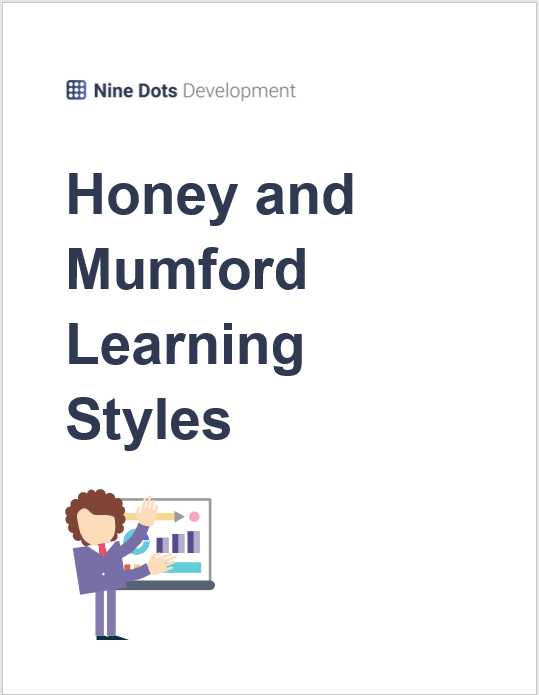Monday 14 Jun 2021 Article
The TakeawayHoney and Mumford’s Learning Styles
Understanding Different Learning Styles and Their Implications on Your Organisation’s L&D Approach
Part 3 of 4
#L&DStrategy #LearningStyles #HoneyAndMumford #PersonalDevelopment
The perfectly matched resource for this article...
Download Our 'Honey and Mumford Learning Styles' Fact Sheet!
Please click below to download our 'Honey and Mumford Learning Styles' Fact Sheet!
Download fact sheet!Playing catchup?
Honey and Mumford’s Learning Styles
When learning something, our main concern is usually what we want to learn – we rarely stop to consider how we want to learn.
There is no single "most effective" way of learning; it varies from person to person.
That being said, Honey and Mumford did identify four main learning styles.
So what are Honey and Mumford’s Learning Styles and how can understanding them boost your development?
What Are Honey and Mumford’s Learning Styles and Where Did They Come from?
In 1986, Peter Honey and Alan Mumford identified these four different approaches people took to learning new information based on Kolb’s Experiential Learning and Development Theory:
- Activists
- Theorists
- Pragmatists
- Reflectors
1. Activists
Activists learn by doing; they have a very practical, hands-on, open-minded approach to learning and are often happy to jump straight into the deep end when trying something new.
- Strengths
Collaborative working and tackling challenges head-on - Weaknesses
Making decisions before thoroughly thinking about the consequences
2. Theorists
Theorists learn best by exploring the theory and reasoning behind concepts, asking questions, and studying facts, figures and models.
- Strengths
Analysing and synthesising testable hypotheses - Weaknesses
Working towards objectives that are ambiguous, unclear or judgement-based
3. Pragmatists
Pragmatists benefit most from learning that can be easily contextualised and applied to their role; abstract concepts are of very little use to them if they doesn’t believe the concepts are relevant or applicable.
- Strengths
Trying new theories and techniques to improve existing processes - Weaknesses
Engaging with and taking on board theory-heavy learning
4. Reflectors
Reflectors learn best by watching from the sidelines, reflecting on results both by themselves and by discussing with others, and coming to a conclusion based off what they have observed.
- Strengths
Gathering information from multiple perspectives before making decisions - Weaknesses
Leading activities and feeling rushed or unprepared
How Can You Use Honey and Mumford’s Learning Styles to Maximise Learning?
Honey and Mumford’s theory states that each one of us will prefer to learn using one, or at most two, of these different learning styles, and that in order to learn efficiently, we should stick to our preferred style as much as possible.
However, to be an effective, agile and flexible learner, you should also develop your ability to learn in other styles too.
---
We have created a free downloadable PDF that provides you with Honey and Mumford’s original definitions of these learning styles and a variety of recommended activities that best suit each learning style – you can download this by following the link below!
In the final part of our Learning Styles series, we will be taking a step back from focusing on individual learning models.
Instead, we will be exploring what different learning and development options are available to you so that you can ensure that your staff development strategy accommodates your employees’ individual learning styles, helping you get the most from your workforce.
Download Our 'Honey and Mumford Learning Styles' Fact Sheet!
Please click below to download our 'Honey and Mumford Learning Styles' Fact Sheet!
Download fact sheet!Missed an article?
More from Understanding Different Learning Styles and Their Implications on Your Organisation’s L&D Approach
